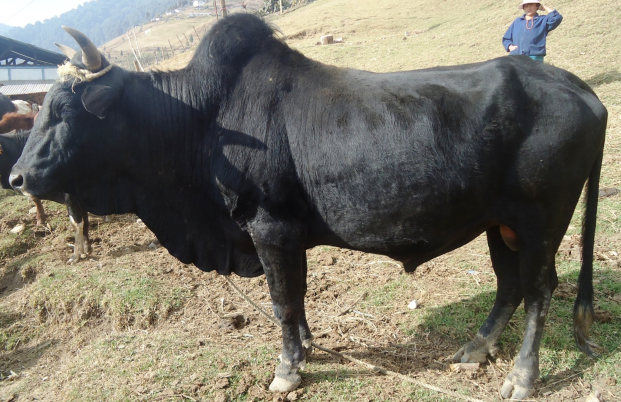Assessment of non-genetic factors affecting the quality of bovine semen production under Bhutanese environment
Keywords:
Age, artificial insemination, breed, non-genetic factor, semen qualityAbstract
The study assessed non-genetic factors influencing the quality of bovine semen production under Bhutanese environment. A total of 472 records of semen production from Jersey (Bos taurus), Mithun (Bos frontalis) and Nublang (Bos indicus) were analyzed. The factors studied were age of bull at procurement and semen collection, breed, season and semen collection interval for their effect on semen quality, which was assessed based on volume (Vol.), Mass Activity (MA), Initial Sperm Motility (ISM) and Sperm Concentration (SC) in fresh semen, and Semen Straw Produced (SSP), Semen Straw Discarded (SSD), Semen Straw Stored (SSS) and Post-Thawing Motility at Production (PTM-P) and Certification (PTM-C) in processed semen. Mean semen recovery rate was 78%. A strong correlation was observed between fresh and processed semen qualities. Best output in processed semen in terms of quantity, quality and recovery rate was found for ejaculate with Volume, MA, ISM and SC of ≥3ml, 3, ≥70% and ≥700x106/ml, respectively. Age had a significant effect on SSP, indicating lesser production for bulls procured after 18 months of age. Age at first semen collection significantly affected MA, ISM, SSP, SSD, SSS, PTM-P and PTM-C, and quality improved with age of bulls. Breed significantly affected MA, ISM, SSD, SSS, PTM-P and PTM-C, indicating best qualities for Nublang, followed by Mithun and Jersey. Season significantly affected Vol., MA, ISM and SSP, showing better qualities in Autumn, followed by Summer and Spring. The collection interval affected SSP and SSS, revealing best productions for collection interval of 11-15 days than once a week as currently practiced. Hence,greater emphasis be given on more collection in Autumn and Summer, avoiding collection within six days from same bull and processing of ejaculates with volume, MA, ISM and SC of minimum 2ml, 2, 70% and 700x106/ml respectively, for optimum semen recovery rate with better quality and minimal waste of resources.

Downloads
Published
License
Copyright (c) 2021 Bhutan Journal of Animal Science

This work is licensed under a Creative Commons Attribution 4.0 International License.





